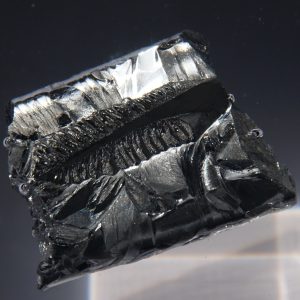On August 15, China’s Ministry of Commerce and General Administration of Customs announced export controls effective September 15 on antimony-related items, including antimony ore, concentrate, metal, oxide, chemicals, and smelting and separation technology. Similar to China’s previous export controls on gallium, germanium, and graphite, China justified the controls by citing the dual-use applications of antimony for both commercial and military items and the corresponding need “to safeguard national security and interests.”
China – which represents nearly 50 percent of global antimony mining and about 80 percent of global antimony processing – will require firms that export antimony to apply for an export license, including identifying the end-user and the end-use of the antimony.
Given U.S. dependence on antimony imports from China and other countries like Belgium and India that also import antimony from China, U.S. firms – including munition plants – are vulnerable to disruptions like export controls in the antimony supply chain. But the Chinese government is unlikely to severely curtail antimony exports. Instead, it will probably continue to allow some antimony exports to the United States, sending a retaliatory signal about the U.S. government’s own export controls but also keeping the U.S. reliant on Chinese antimony.
Antimony has both commercial and military applications. The largest use of antimony in the United States in 2022 was for flame retardants, with the antimony being in the form of antimony trioxide. There is increasing use of another form of antimony called antimony trisulfide in solar photovoltaic cells too. Antimony trisulfide, however, is also used in over 200 munitions used by the Department of Defense. For example, it is used as a percussion primer in ammunition and a stab detonator in explosive munitions (e.g., grenades, mortars, rockets, artillery rounds).
The other major form of antimony is antimony metal. When alloyed with lead, antimony metal forms alloys for not only lead-acid batteries but also ammunition, including the cores of certain 5.56 mm ammunition, the slugs of some 7.62 mm ammunition, and the base seals of various .50 Cal ammunition. The Institute for Defense Analyses in 2008 estimated that the Department of Defense used nearly 4,300 metric tons annually of antimony in all its forms.
Yet, the United States relies on imports to meet over 80 percent of its antimony consumption. Specifically, over 76 percent of U.S. imports of antimony oxide – which includes antimony trioxide – come from China, while Belgium is the second-largest U.S. import source for antimony oxide at 11 percent. Similarly, China is the largest U.S. import source for unwrought antimony metal and powder at 26 percent of U.S. imports, while India is the second-largest import source at 23 percent of U.S. imports.
Both Belgium and India, however, rely partially on antimony feedstock from China to supply their processing plants. For instance, India lacks antimony mining, so its processing capacity relies fully on ore and concentrate imports, nearly 20 percent of which are from China. Thus, the United States depends significantly, both directly and indirectly, on Chinese antimony exports.
Notably, U.S. options for sourcing antimony trisulfide, which has military applications, are particularly limited. In 2016, the Department of Defense noted, “[T]here are no known mines producing acceptable grade ore under United States or NATO partner control. China is the largest producer of antimony [tri]sulfide and controls its availability on the world market.” Consequently, the Department of Defense awarded Perpetua Resources – which owns the antimony-bearing Stibnite Gold Project in Idaho – $15.5 million to study the possibility of converting ore from its project into military-standard antimony trisulfide and converting antimony metal into military-standard antimony trisulfide.
However, the impact of China’s antimony export controls on U.S. firms will probably be minimal, similar to China’s export controls on gallium, germanium, and graphite. Before the antimony controls take effect, U.S. firms and firms from other countries will predictably stockpile more antimony, increasing prices. In the first few months after the export controls take effect, China’s antimony exports will be severely curtailed as it usually takes two to three months for the Chinese government to review export license applications.
The Chinese government will likely grant export licenses, but antimony exports will be less than before the controls. Importers of Chinese antimony will naturally seek to increase antimony imports from countries outside China, like Myanmar. Still, China’s dominant share of antimony mining and processing will make fully detaching from Chinese antimony imports highly unlikely. Antimony prices will eventually stabilize as firms source antimony from other countries and adapt to longer lead times for importing Chinese antimony.
Moving forward, China could impose export controls on other minerals – like bismuth, rubidium, and tantalum – in which the United States relies heavily on imports, including from China. By imposing export controls, the Chinese government signals that it can retaliate against the U.S. government’s own export controls; by granting export licenses, China keeps the United States largely dependent on its critical minerals. The Chinese government could then weaponize this dependence by imposing an immediate export ban at a more critical time for China and with a far greater impact on the United States.
China’s export controls on antimony are thus a shot across the bow in the China-U.S. minerals trade war. So far, China’s mineral export controls have not undermined U.S. national security. Paradoxically, the controls have encouraged the diversification of global mineral supply chains away from China. Should China-U.S. tensions, especially in the military domain, continue to intensify, the Chinese government could impose more severe export controls – even export bans. For now, however, China’s export controls in the China-U.S. mineral trade war are more sound than fury.

































